Product description of strain type pressure transmitter:
悬臂梁重传感器(Cantilever weight sensor)
悬臂梁结构:一端固定一端加载,重心低,安装方便,互换性好。
Cantilever structure: fixed at one end and loaded at the other end, low center of gravity, convenient installation and good interchangeability.
传感器弹性体采用合金钢,胶密封。
The elastomer of the sensor is made of alloy steel and sealed with rubber.
适用于汽车衡、电子秤、平台秤、料斗秤等。
Applicable to truck scale, electronic scale, platform scale, hopper scale, etc.
可选择内置式放大器,4~20mA或0~5V输出。
Built in amplifier can be selected, with 4 ~ 20mA or 0 ~ 5V output.
结构尺寸小,钢性好,抗偏载能力强;
Small structural size, good rigidity and strong ability to resist eccentric load;
坚固耐用,使用寿命100万次以上;
Strong and durable, with a service life of more than 1 million times;
型号(Model):WPL801
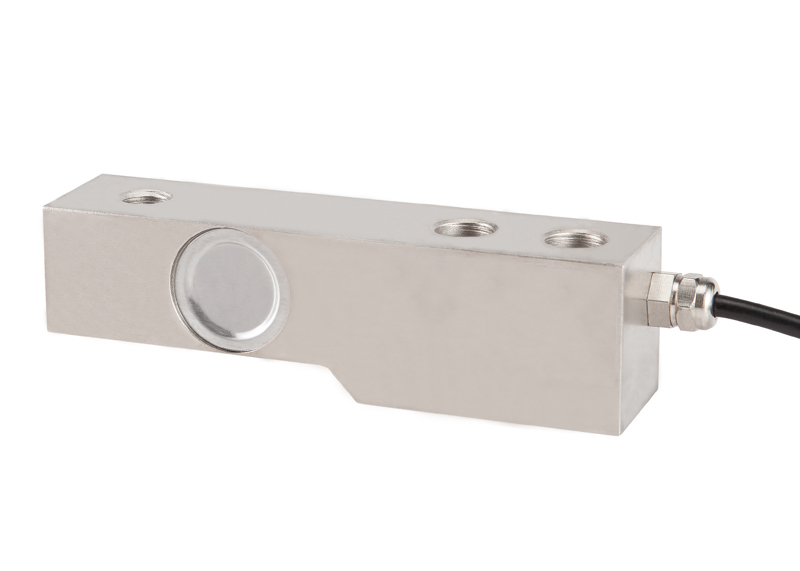
技术参数(technical parameter):
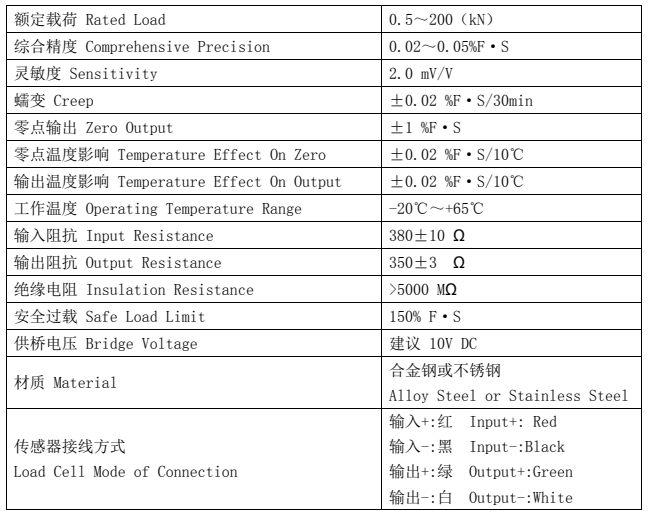
结构尺寸(structure size):
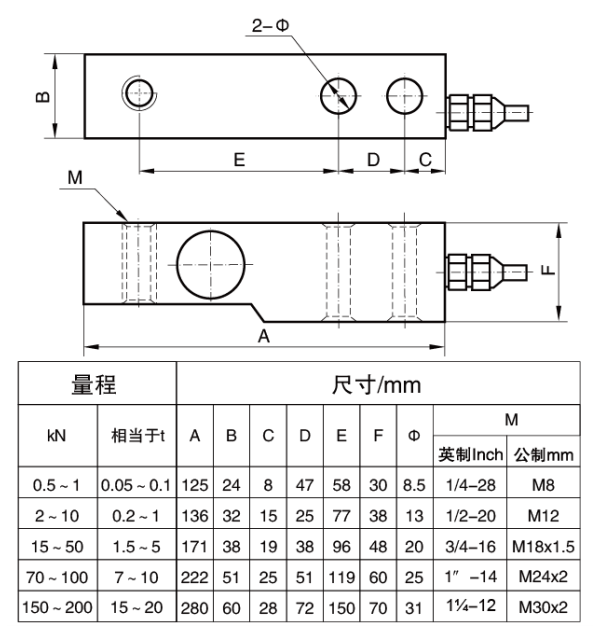
型号(Model):WPL802
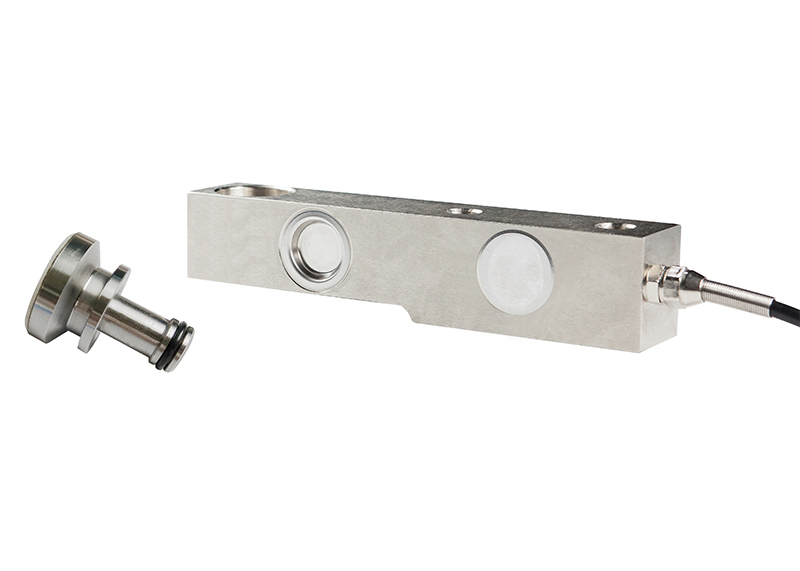
技术参数(technical parameter):
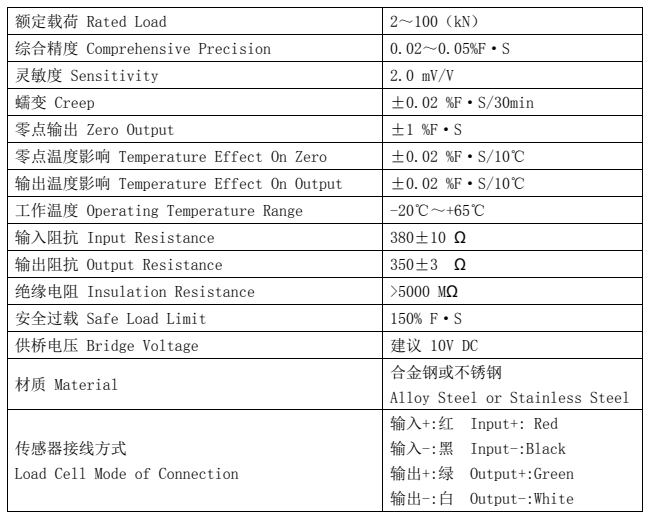
结构尺寸(structure size):
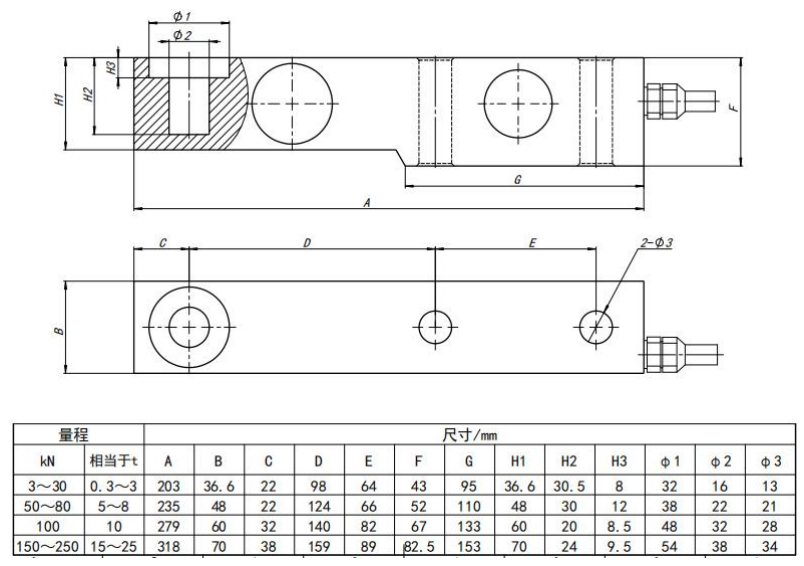 型号(Model):WPL803
型号(Model):WPL803
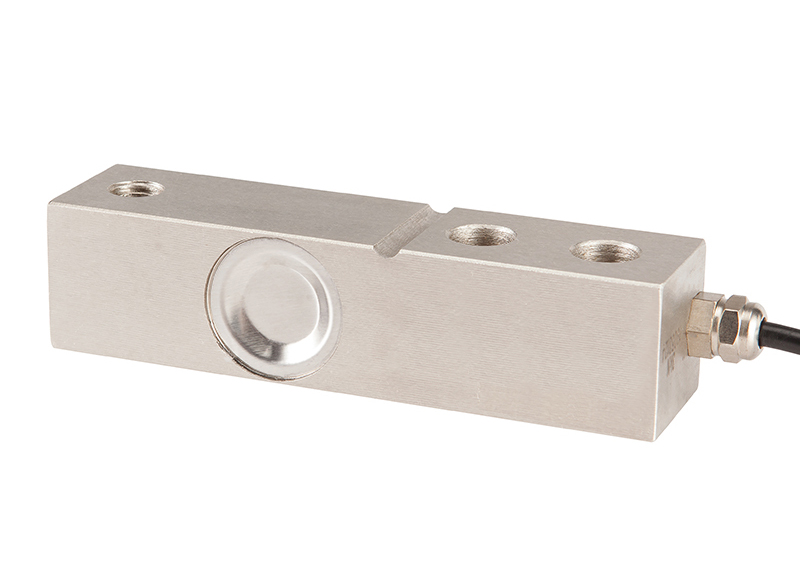
技术参数(technical parameter):
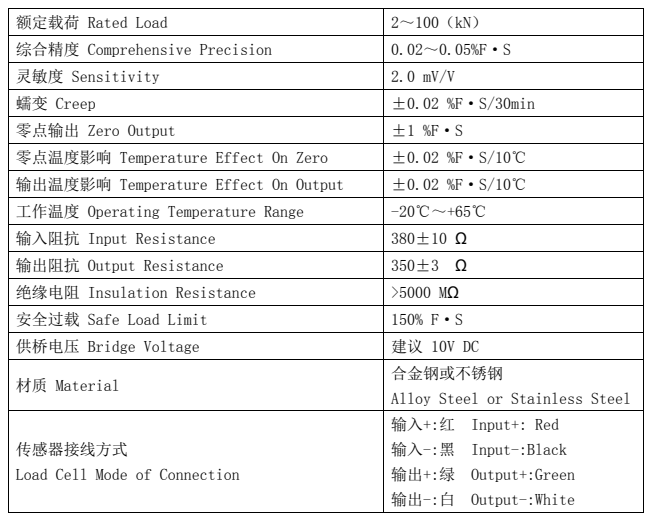
结构尺寸(structure size):
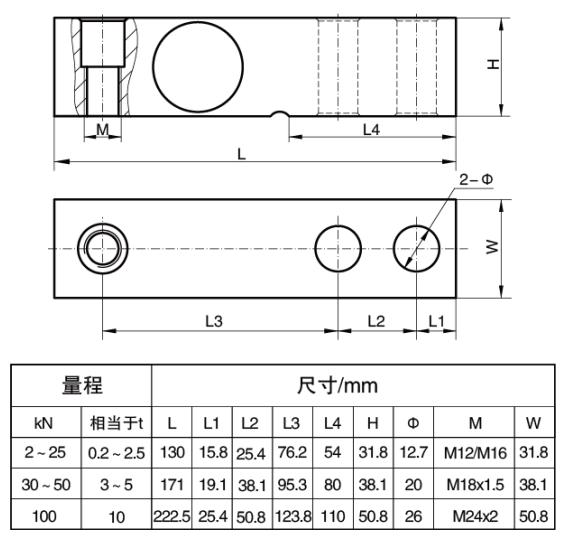
Ordering considerations
How to select load cell
Weighing sensor is known as the heart of electronic weighing instrument. Its performance determines the accuracy and stability of electronic weighing instrument to a great extent. When designing electronic weighing apparatus, we often encounter the problem of how to select sensors.
The load cell is actually a device that converts the mass signal into measurable electrical signal output. The actual working environment of the sensor should be considered before using the sensor, which is very important for the correct selection of the sensor. It is related to whether the sensor can work normally, its safety and service life, and even the reliability and safety of the whole weighing instrument.
The impact of the environment on the sensor mainly includes the following aspects:
(1) The high temperature environment causes some problems to the sensor, such as melting of coating materials, civilized solder joints, structural changes of stress in the elastomer and so on. For sensors working in high temperature environment, high temperature resistant sensors are often used; In addition, heat insulation, water cooling or air cooling devices must be added.
(2) The influence of dust and humidity on the short circuit of the sensor. Under such environmental conditions, sensors with high tightness shall be selected. Different sensors have different sealing methods, and their tightness is very different.
Common seals are sealant filling or coating; Rubber gasket mechanical fastening seal; Welding (argon arc welding, plasma beam welding) and vacuum nitrogen filling sealing.
From the perspective of sealing effect, the welding sealing is the best, and the amount of filling and coating sealant is poor. For sensors working in clean and dry indoor environment, sensors sealed with glue can be selected, while for some sensors working in humid and dusty environment, sensors with diaphragm hot sleeve seal or diaphragm welding seal and vacuum nitrogen filling should be selected.
(3) In the highly corrosive environment, such as the impact of moisture and acid on the elastomer damage or short circuit of the sensor, the sensor with good corrosion resistance and good tightness should be selected with plastic spraying or stainless steel cover on the outer surface.
(4) The influence of electromagnetic field on the output signal of sensor. In this case, the shielding of the sensor shall be strictly checked to see whether it has good anti electromagnetic ability.
(5) Flammable and explosive not only cause complete damage to the sensor, but also pose a great threat to other equipment and personal safety. Therefore, sensors working in flammable and explosive environments put forward higher requirements for explosion-proof performance: explosion-proof sensors must be selected in flammable and explosive environments. The sealing cover of this sensor should not only consider its tightness, but also considerTo the explosion-proof strength, as well as the waterproof, moisture-proof and explosion-proof of the cable lead-out head.
The selection of sensor range can be determined according to the comprehensive evaluation of factors such as the maximum weighing value of the scale, the number of sensors selected, the self weight of the scale body, the maximum eccentric load and dynamic load that may occur.
Generally speaking, the closer the range of the sensor is to the load allocated to each sensor, the higher the accuracy of its weighing. However, in actual use, because the load added to the sensor is not only the weighed object, but also the dead weight, tare weight, eccentric load, vibration and shock of the scale, many factors should be considered when selecting the sensor range to ensure the safety and service life of the sensor。
According to experience, the sensor should generally work within 30% ~ 70% of its range. However, for some weighing instruments with large impact force in the process of use, such as dynamic track scale, dynamic truck scale, steel scale, etc., when selecting the sensor, it is generally necessary to expand its range, make the sensor work within 20% ~ 30% of its range, and increase the weighing reserve range of the sensor to ensure the sensing
Precautions for use
Precautions for use of load cell
1. Do not exceed the range: frequently exceeding this range will cause irreversible damage to the elastomer and strain gauge inside the symmetrical weight sensor.
2. Use shielded cable, which contains all wires leading to or from the display circuit. The connection and grounding point of shielding wires shall be reasonable. If they are not grounded through the mechanical frame, they shall be grounded externally, but they are not grounded after they are connected with each other, which is floating.
3. Stranded copper wires are used to form electrical bypass to protect them from welding current or lightning stroke.
4. Electrical connections, such as signal cables of sensors, shall not be arranged in parallel with strong current power lines or control lines. If they must be placed in parallel, the distance between them shall be kept above 50cm, and the signal lines shall be sheathed with metal tubes.
5. Try to use structural accessories with automatic positioning (reset) function, such as spherical bearing, articulated bearing, positioning fastener, etc. They can prevent some lateral forces from acting on the sensor.
6. Handle with care, especially the small capacity sensor made of alloy aluminum elastomer. Any impact and drop may cause great damage to its metering performance.
7. Although the weighing module has a certain overload capacity, the overload of the sensor should be prevented during the installation of the weighing system.
8. In any case, the power line and control line shall be twisted to 50 rpm. If the sensor signal line needs to be extended, a special sealed cable junction box shall be used.
9. Horizontal adjustment: horizontal adjustment has two aspects. First, the installation plane of the installation base of a single sensor should be adjusted horizontally with a level gauge. On the other hand, the installation surface of the installation base of multiple sensors should be adjusted to a horizontal plane as much as possible (with a level gauge), especially in the weighing system with more than three sensors.
Cantilever sensors are widely used in small Weighbridge and platform scale. Generally, three sensors or four sensors are used as a group. Through the signal and conditioner, the signals of multiple sensors are processed and then transmitted to the measuring instrument, so as to show the measured values.
10. The signal cable of the sensor shall not be arranged in parallel with the strong current power line or control line (for example, do not put the sensor signal line, strong current power line and control line in the same pipe). If they must be placed in parallel, the distance between them shall be kept above 50cm, and the signal line shall be sheathed with metal pipe.
11. In any case, the power line and control line shall be twisted to 50 rpm. If the sensor signal line needs to be extended, a special sealed cable junction box shall be used. If this kind of junction box is not used, but the cable is directly connected with the cable (soldering end), special attention shall be paid to the sealing and moisture-proof. After connection, the insulation resistance shall be checked and meet the standard(2000 ~ 5000m). If necessary, recalibrate the sensor.
12. If the signal cable is very long and high measurement accuracy should be ensured, the cable compensation circuit with relay amplifier should be considered.
13. All conductors leading to or from the display circuit shall be shielded cables. The connection and grounding point of shielding wire shall be reasonable. If it is not grounded through the mechanical frame, it is grounded externally, but the shielding wires are not grounded after they are connected with each other, which is floating.
Note: three sensors are connected in full parallel. The sensor itself is a 4-wire system, but it is replaced by a 6-wire system in the junction box.
14. The sensor output signal readout circuit shall not be placed in the same box with the equipment that can produce strong interference (such as "controllable silicon", contactor, etc.) and the equipment with considerable heat generation. If this cannot be guaranteed, it shall be considered to set a baffle between them for isolation, and a fan shall be arranged in the box.
15. The electronic circuit used to measure the output signal of the weight sensor shall be equipped with an independent power supply transformer as far as possible, rather than sharing the same main power supply with equipment such as contactors.
How to preliminarily judge the quality of the sensor?
1. Measure resistance
(1) It would be much easier if there were a manual for the load cell. First use a multimeter to measure the input and output resistance of the sensor, and then compare it with the manual. If the difference is large, it means that the load cell should be retested.
(2) If there is no instruction manual, please measure the input resistance, that is, the resistance between exc + and exc -; Output resistance, i.e. the resistance between sig + and sig -; Input resistance, output resistance and bridge resistance shall meet the following relationship:
(3). Input resistance > output resistance > bridge resistance
(4). The bridge resistances are equal or equal to each other
If you have inconsistent measurement results for several times in a row, you can determine that the sensor is damaged.
2. Measure voltage
First, use a multimeter to measure the voltage between the exc + and exc - terminals of the instrument, which is the excitation voltage of the load cell, including DC5V and dc10v. Here, take DC5V as an example. When no-load, use a multimeter to measure MV between sig + and sig - lines. If it is about 1-2mv, it is correct; If the MV number is particularly large, it indicates that the sensor is damaged.
When loading, please use the multimeter MV file to measure the MV number between sig + and sig - wires. It will increase in proportion to the weight of the load. The maximum value is 5V (excitation voltage) * 2mV / V (sensitivity) = about 10mV. Otherwise, it indicates that the sensor has been damaged.



















